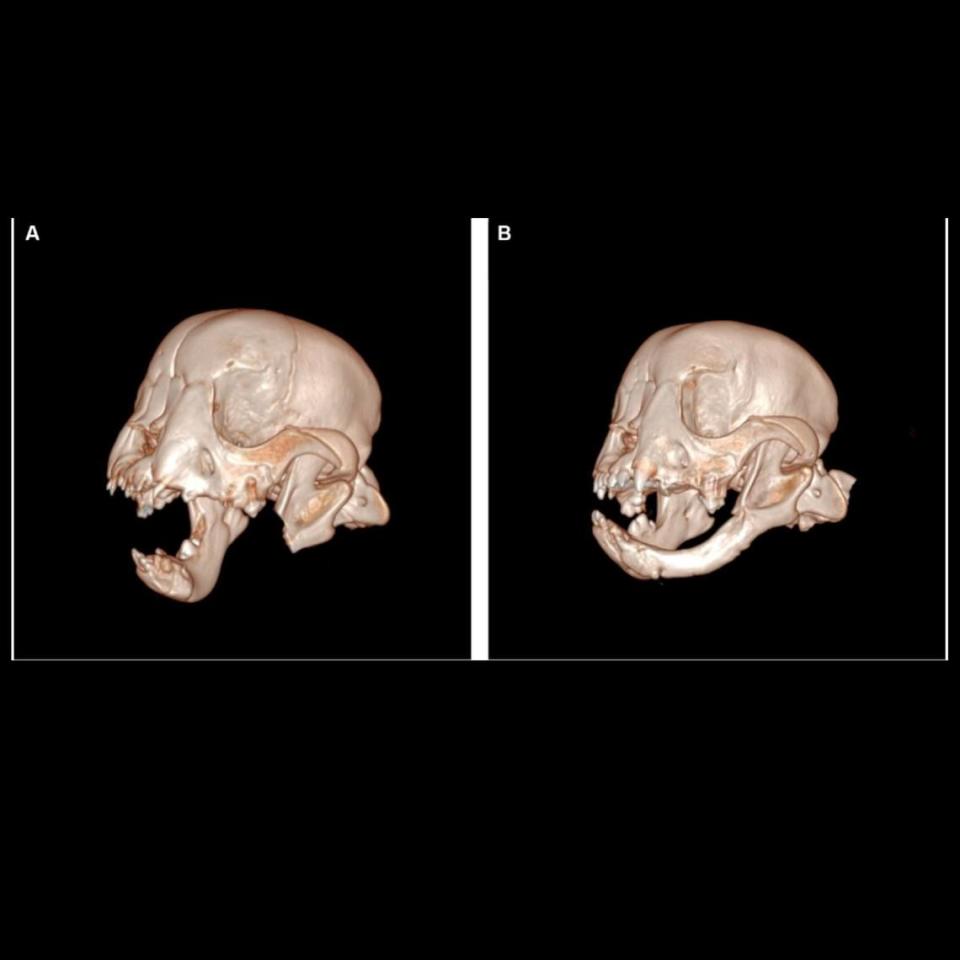French bulldog puppy regrows jaw bone after cancer surgery, NY vets say. It’s a first
A French bulldog puppy spontaneously regrew a portion of his jaw bone following a surgery to remove a cancerous tumor, New York veterinarians said.
It’s never been seen before.
Tyson, a 3-month-old Frenchie, walked into Cornell’s College of Veterinary Medicine Dentistry and Oral Surgery Service with owners Melissa Forsythe and Mike Lacagnina for a regularly scheduled cleft palate surgery, the college said in a Feb. 1 news release.
The surgery was intended to address a congenital defect in the puppy’s palate, his veterinarians said in an October case report published in the journal Frontiers in Veterinary Science, and Tyson was there for a pre-surgery check-in.
But when veterinarians took a look inside Tyson’s mouth, they saw something alarming — a tumor in his jaw.
‘Give him a chance’
“Tyson’s tumor was an oral papillary squamous cell carcinoma, which is a malignant cancer in dogs,” Cornell dentistry and oral surgery resident Alexandra Wright, who led Tyson’s vet team, said in the release. “Oral squamous cell carcinoma is the second-most common malignant oral tumor in dogs, and this papillary subtype has previously been reported in young dogs.”
The tumor appeared as a large squishy mass protruding from the puppy’s lower jaw, according to images shared in the case report.
Wright told Tyson’s family, from Rochester, that the tumor needed to be removed, and to do so, the surgeons would also need to remove most of Tyson’s lower jaw on the left side, according to the university.
“We didn’t know if we wanted to put a puppy through all this. The prognosis at the time was uncertain,” Forsythe told Cornell. Scans showed the cancer had not spread to other parts of Tyson’s body, so Forsythe “decided to give him a chance and continue with surgery. We had no idea his jaw would grow back.”
Tyson underwent surgery, according to the case report, but since the tumor was caught early, a large portion of the dog’s periosteum was preserved even as bone was removed.
Periosteum is the thin membrane that surrounds bone and holds blood vessels and nerves, helping bones to grow as animals — and people — get older.
The surgery was successful in removing the tumor but left Tyson with a large chunk of jaw missing, according to the case report.
Or so they thought.
Making history
Eight weeks later, Tyson came back to Cornell’s veterinary clinic to have the palate surgery needed originally. That’s when Wright and the vet team felt his jaw, and it was firm.
The team took a CT scan of his head and found new bone had grown where a hole had been left, according to the case report.

The bone wasn’t entirely the same, the veterinarians said in the case report. There was no mandibular canal, a channel holding major blood vessels, and no teeth, but the length of the bone on the left now matched the right, preventing the jaw from drifting, the veterinarians said.
“In humans, young patients who undergo mandibulectomy have been reported to regenerate new bone,” the veterinarians said in the case report. “This is the first report of spontaneous regeneration of the mandible following oral oncological surgery in a dog.”
Wright credits the regeneration to the periosteum left behind.
“This was likely imperative to the regeneration of new bone,” Wright told the university.
‘The best patient’
Tyson completed the second surgery, according to the case report, and in the months since has been able to enjoy life without jaw pain or the return of the tumor.
“He spent the majority of his puppyhood wearing an E-collar, not able to play with toys or chew on anything,” Forsythe told the university. “He was the best patient.”
Forsythe said in the months since Tyson’s extraordinary recovery, he has graduated obedience class, passed a Canine Good Citizen test and walked in a Christmas parade with his classmates.
“His case now demonstrates the possibility of complete bone regeneration when working with a patient this young,” Wright told the university.
Cornell University is in Ithaca, about 215 miles northwest of New York City.
This dog breed ranks as the nation’s most popular. Which others made the list?
This is the nation’s most popular dog breed — for the first time ever, report finds
A winter coat for your dog is more than just cute — it may be necessary, experts say
2,000-year-old skull reveals Romans may have started our lapdog craze, study says

